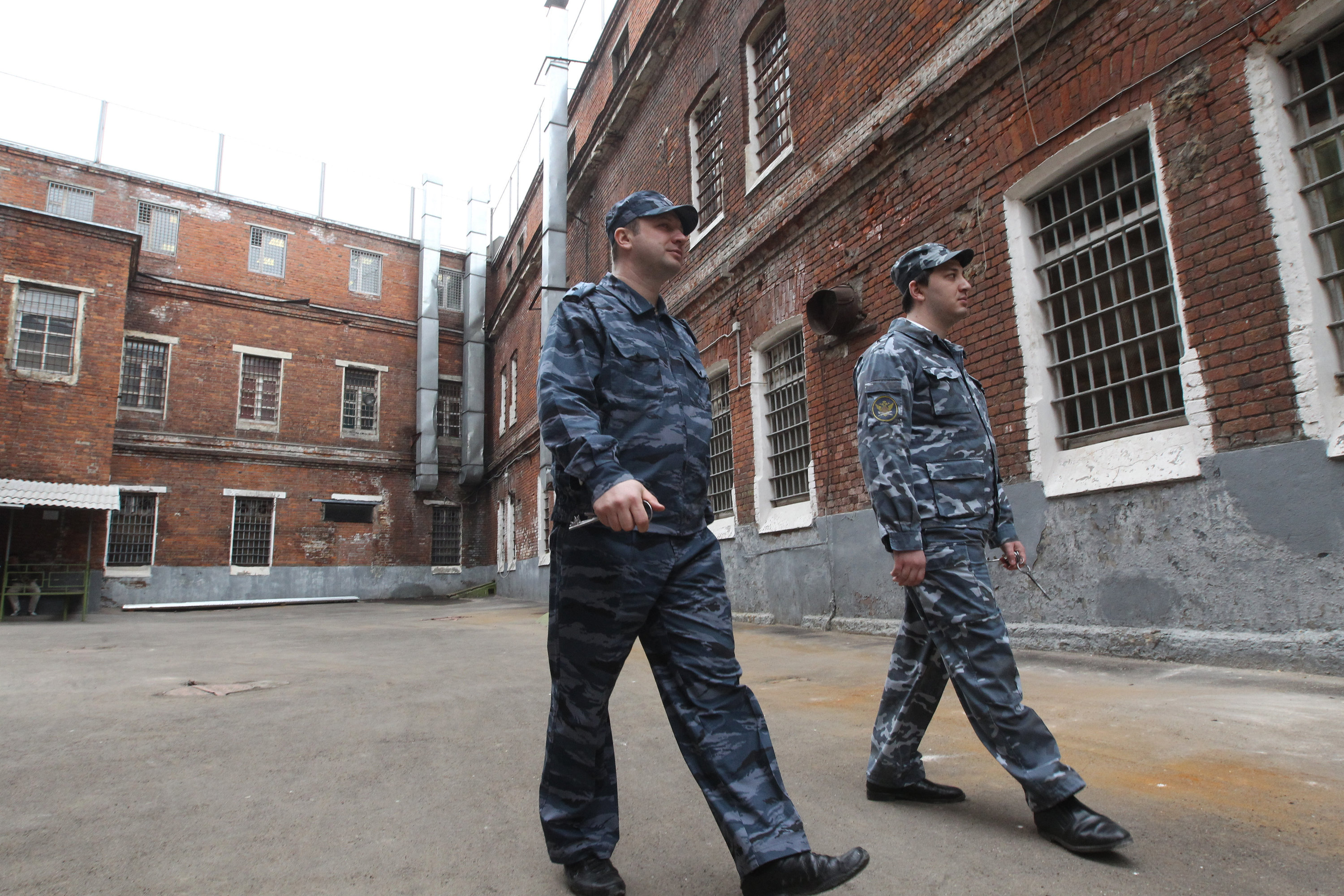Ingrid Burke, RAPSI
In response to the shocking volume of complaints launched on the basis of pre-trial detention conditions in Russia, the European Court of Human Rights (ECHR) opted to issue a pilot-decision aimed at strengthening the protections in the country guaranteed under Article 3 of the European Convention on Human Rights (Convention), which prohibits torture and inhuman and degrading treatment. Subpar detention conditions have given rise to ECHR claims against a great many states party to the convention, including such bastions of Western idealism as France and Germany. A similar structural problem that had formerly given rise to a bounty of Polish claims filed with the ECHR was successfully addressed by a 2009 pilot-judgment. Thus, the court decided to take a similar approach with the Russian remand center situation. Nearly a year after the passage of the pilot-judgment, RAPSI decided to take a look back at the progress that has been made thus far.
Ananyev and others v. Russia
The ECHR issued a pilot-decision after considering the cases of Sergey Ananyev, Gennadiy Bashirov, and Gulnara Bashirova, all of whom complained about conditions they endured in Russian remand prisons between 2005 and 2008. All three complained of overcrowding. Bashirova’s complaints were rejected as inadmissible, having been barred by the statute of limitations. Considering the complaints of Ananyev and Bashirov, however, the court found that both had been forced to endure inhuman and degrading treatment, in violation of Article 3. Specifically, the court found that both had been given less than 1.25 meters and 2 meters of personal space respectively, and that the number of detainees housed in each of their cells was significantly larger than that of the available sleeping spaces.
While acknowledging the inevitability of some degree of suffering and humiliation in the context of any deprivation of liberty, the court explained that in compliance with Article 3, states are required to “ensure that a person is detained in conditions which are compatible with respect for human dignity, that the manner and method of the execution of the measure do not subject him to distress or hardship of an intensity exceeding the unavoidable level of suffering inherent in detention and that, given the practical demands of imprisonment, his health and well-being are adequately secured.”
Discussing the problem of overcrowding, the court noted that the provision of less than three square meters of floor-space per detainee has consistently been viewed as a violation of Article 3 in and of itself.
Ultimately, the court considered three key elements in determining that Russia had violated the Article 3 rights of Ananyev and Bashirov by way of the conditions of their detention: a) each detainee in a given cell must be afforded his own sleeping space; b) each detainee must have at least three square meters of floor space to his disposal; and c) the cell must be large enough to allow the detainees to move freely between items of furniture.
Beyond overcrowding, a lack of adequate outdoor exercise has been seen as an aggravating factor in the court’s consideration of Article 3 detention cases when claimants challenge the lack of freedom of movement within their cells. The court further reiterated the necessities of ensuring the availability to detainees of natural light and fresh air within cells.
Finally, the court emphasized the imperative of the availability to detainees of appropriate sanitary facilities, including sufficient access to functioning showers and private toilet areas.
Considering these standards in light of the present case, the court held for the applicants, concluding: “Mr. Ananyev and Mr. Bashirov were afforded less than three square metres of personal space. They remained inside the cell all the time, except for a one-hour period of outside exercise: they had to have their meals and answer the calls of nature in those cramped conditions… The Court therefore considers that the applicants Mr. Ananyev and Mr. Bashirov were subjected to inhuman and degrading treatment in breach of Article 3 of the Convention.”
The pilot-judgment procedure
The pilot-judgment procedure is a mechanism developed in recent years by the ECHR as a means of addressing issues that have served as the root causes of large numbers of claims launched against a particular state. In the words of the Court’s registrar, “The central idea behind the pilot judgment procedure is that where there are a large number of applications concerning the same problem, applicants will obtain redress more speedily if an effective remedy is established at national level than if their cases are processed on an individual basis in Strasbourg.” In this case, for instance, the ECHR chose to issue a pilot-judgment based on the volume of cases arising out of Russia challenging its pre-trial detention conditions. By addressing the issues underlying these complaints, the court hopes to resolve the problem as a whole, in turn ultimately reducing the number of claims filed.
According to an informational note issued by the ECHR registrar, pilot-judgments will aim:
- “to determine whether there has been a violation of the Convention in the particular case;
- to identify the dysfunction under national law that is at the root of the violation;
- to give clear indications to the Government as to how it can eliminate this dysfunction;
- to bring about the creation of a domestic remedy capable of dealing with similar cases (including those already pending before the Court awaiting the pilot judgment), or at least to bring about the settlement of all such cases pending before the Court.”
Explaining its decision to invoke the pilot-judgment procedure in this case, the court noted that in the past decade, it has found Article 3 violations in upwards of 80 cases arising from similar fact patterns. In many of those cases, Article 13 (Right to an effective remedy) violations were further established based on the court’s finding of a lack of effective domestic remedy. Even beyond these factors, approximately 250 claims against Russia based primarily on Article 3 detention violations have been filed with the ECHR and are currently awaiting first examination.
The facts underlying the bulk of these Article 3 violations were common: “detainees suffered inhuman and degrading treatment on account of an acute lack of personal space in their cells, a shortage of sleeping places, unjustified restrictions on access to natural light and air, and non-existent privacy when using the sanitary facilities.”
Recommendations for Russia
Based on the sheer number of similar cases, the court classified the inadequate conditions Ananyev and Bashirov had complained of as part of a “recurrent structural problem” in Russia. The court attributed the problems to a “malfunctioning of the Russian penitentiary system and insufficient legal and administrative safeguards against the proscribed kind of treatment.”
The judgment laid out a plethora of recommendations: some aimed at the short term, others at the long term.
Longer-term initiatives
In the court’s view, the underlying cause of overcrowding in Russia is that of the abundant use or pre-trial detention, particularly in cases where such is not necessarily warranted – as it would be, for example, in instances of violent crime – and for unreasonably long periods of time. Another key problem is the impact that trial postponements have on the situation; in such cases there has been a tendency to extend detention periods.
Toward this end, the court suggested that custodial measures should be taken only in very serious cases involving violent crimes, and should be treated as the exception rather than the norm.
Instant gratification: short-term measures
The court suggested that conditions could improve notably with little temporal or monetary investment by way of the placement of curtains or partitions around detention-cell toilets, removing the thick netting on cell windows that tends to stifle natural light, and by providing for more showers.
Other, slightly more time and resource intensive initiatives could improve matters considerably until longer-term measures can be appropriately implemented. Legal safeguards could be introduced for the prevention and alleviation of overcrowding. Realistic maximum capacities, for instance, should be introduced and adhered to, and remand center chiefs should be granted the right to refuse any detainees that would push a given prison population beyond its established limits.
Finally, the court proposed the introduction of effective preventative and compensatory remedies in order to address the connected Article 13 problem. Ideally, such preventative measures would provide detainees with means to launch complaints that would provoke an immediate response to unsavory detention conditions. Compensatory measures would allow prisoners to seek damages for time spent in subpar detention conditions.
Whereas the ECHR is empowered to freeze active cases arising from violations sought to be addressed through a pilot-judgment, it refrained from doing so in this case in order to apply a bit of pressure, reasoning that, “continuing to process all conditions-of-detention cases in a diligent manner will remind the respondent State [Russia] on a regular basis of its obligations under the Convention and in particular those resulting from this judgment.”
What has Russia done?
The ECHR required Russia to submit an action plan within six months of the Ananyev judgment becoming final, explaining what had already been done and projecting what else would be done toward implementing the pilot-judgment and when these measures could be expected. On October 10, 2012 – six months from the day the judgment took effect – Russia did just that.
In organizing its long-term approach to the issues addressed in the pilot-judgment, Russia has zeroed in on three key action areas: establishing a balanced method for deciding whether an individual should be initially placed in and/or retained in pre-trial detention, as well as establishing alternative solutions; improving domestic remedies for detainees concerned with poor conditions; and bringing the overall quality of detention conditions in the country up to international par.
Russia’s first step was the establishment of a working group comprised of members of all relevant state institutions, including: the Supreme Court, the General Prosecutor’s Office, the Investigative Committee, the Justice Ministry, the Finance Ministry, the Interior Ministry, the Federal Penitentiary Service, and the Federal Bailiff Service. The Russian working group is working in conjunction with the Council of Europe Department for the Execution of Judgments of the European Court.
Several measures have already been taken toward the end of implementing the pilot-judgment.
Information on the pilot-judgment has been published in the Supreme Court’s Overview of the European Court’s Judgments. An overview of the case has been submitted to the country’s regional courts. Extracts were expected to be published in the Supreme Court’s Review of Legislation and Judicial Practice. Penitentiary officers were notified of the judgment by way of a federal database. The judgment’s text has been the subject of high-level training courses in international human rights and the Rule of Law. Its contents have been studied by investigators, judges, prosecutors, and other concerned officials as well, during the course of routine training sessions.
Furthermore, various legislative initiatives have aimed to reshape Russia’s pre-trial detention policy. Several articles of the Criminal Code currently set out “an exhaustive list or reasons and [regulate] in detail the procedure for application of detention as a measure of restraint.” Additional mechanisms were introduced as well in order to increase the prevalence of house arrests.
In March, then-president Dmitri Medvedev introduced to the Duma a series of proposed amendments to the Criminal Code that – among other things – would cap the time allocated for inquiries at the launch of an investigation, thus minimizing pre-trial proceedings. Legislative initiatives geared toward rehabilitating drug addicts further aim to remedy overcrowding by curbing recidivism.
Constitutional Court case law has further contributed to reform efforts. Recent decisions have reiterated the imperative of protecting the rights of criminal defendants to timely proceedings and promoting a light judicial touch with regard to pre-trial detention orders.
These and related initiatives have already paid off with regard to Russia’s remand-center population. According to statistics published alongside Russia’s Ananyev action plan, the number of detainees held in remand centers has decreased significantly in recent years.
By next fall, the relevant Russian authorities are expected to submit a draft law “On the Detention in Custody of Persons Suspected or Accused of Criminal Offenses,” which will seek to address the issues raised by the ECHR in Ananyev. By 2017, Russia plans to have built 26 new remand centers, to bring the amount of personal space allocated to each detainee up to four square meters, and to have successfully cordoned off toilets from the main cell areas in remand centers. In the meantime, the penitentiary services plan to overhaul the current set of detention conditions in favor of those better aligned with the relevant international standards.
What the Council of Europe thinks of Russia’s progress
The Committee of Ministers is the Council of Europe’s decision-making body. Among its many duties is that of supervising the execution of ECHR judgments. Senior Administrator for the Secretariat of the Committee of Ministers Abel Campos told RAPSI that the Committee has been supervising the pilot-judgment’s execution since its issuance.
Campos referred to the decision adopted during the Committee’s December meeting on the pilot judgment, wherein Russia’s timely action-plan submission was applauded, and the plan’s “comprehensive and long-term strategy for the resolution of the structural problem” was commended.
Campos further noted that poor detention conditions have been the source of problems in several member states. A fact sheet released by the ECHR in October outlining key case law developments concerning detention conditions highlights related cases arising from a wide range of member states beyond Russia , including: Moldova, France, Poland, Turkey, Slovenia, Ukraine, Germany, Romania, and Lithuania.
Expert commentary
Looking over the action plan, Russia’s efforts appear to be truly commendable. The court’s advice appears to have been heeded and great strides appear to have been taken.
But is it enough to resolve the issue?
Speaking with RAPSI, human rights professor, advocate, and attorney Philip Leach – who has developed an expertise in assisting Russian NGOs in their ECHR litigation efforts – expressed doubt that Russia’s initiatives are as yet up to par with what the problem truly requires. In his view, “The Court (in more than 80 previous judgments), and the Council of Europe, have for more than ten years made it very clear that the deplorable state of many of Russia’s over-crowded remand centres is utterly unacceptable. Although the problems, and their causes, are admittedly complex, given the excessive length of time which has already passed since the Russian authorities have been on notice of this situation, the Ananyev action plan does not contain sufficient specific and concrete steps to ameliorate this situation. It is also deeply regrettable that it is envisaged that another four years will pass before certain measures are taken, during which time detainees will continue to live in inhuman conditions.”
While Professor Leach doesn’t appear to be optimistic with regard to quick and steady improvement, he added that the involvement of civil society could improve matters by expanding the present dialogue. “It is important that the Government's response should be open to thorough public scrutiny - the authorities should be actively engaging with civil society over the adequacy of their proposals, and responding to any concerns expressed by amending their plans.”



